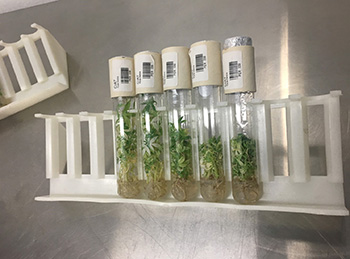 ConDev's work in food production systems in Guatemala, El Salvador, Afghanistan, Iraq, Rwanda, Ghana, the DR Congo, and other locations provides insight into conflict resistant agricultural enterprise. Farmers as well as former combatants have also offered their advice. Simply put, products that are hard to find, compact and easy to protect, and/or difficult to process or convert to cash, are typically somewhat conflict resistant. Crops that are easy to steal and use are vulnerable. Maize and cattle are, for example, easy to steal, and are often the first assets to disappear in conflict. Cowpeas are indeterminate (mature at different times over a long period) are resilient -- they suffer damage but recover. Peanuts and root crops are more difficult to harvest from underground, especially if the tops are cut off. Cassava has the additional advantage of being toxic if not properly processed. Confined animal systems -- poultry and egg production, guinea pigs, and even small-scale cattle and lamb feedlots can be better protected during conflict than extensive feeding systems. Small greenhouse production has been found especially profitable and resistant to theft and damage in conflict. Crops that can be left for long periods, harvested at convenience of the farmer, and which require processing are among the most resistant. Chinchona (the tree from whose bark quinine is manufactured) is an especially conflict resistant crop.
ConDev's work in food production systems in Guatemala, El Salvador, Afghanistan, Iraq, Rwanda, Ghana, the DR Congo, and other locations provides insight into conflict resistant agricultural enterprise. Farmers as well as former combatants have also offered their advice. Simply put, products that are hard to find, compact and easy to protect, and/or difficult to process or convert to cash, are typically somewhat conflict resistant. Crops that are easy to steal and use are vulnerable. Maize and cattle are, for example, easy to steal, and are often the first assets to disappear in conflict. Cowpeas are indeterminate (mature at different times over a long period) are resilient -- they suffer damage but recover. Peanuts and root crops are more difficult to harvest from underground, especially if the tops are cut off. Cassava has the additional advantage of being toxic if not properly processed. Confined animal systems -- poultry and egg production, guinea pigs, and even small-scale cattle and lamb feedlots can be better protected during conflict than extensive feeding systems. Small greenhouse production has been found especially profitable and resistant to theft and damage in conflict. Crops that can be left for long periods, harvested at convenience of the farmer, and which require processing are among the most resistant. Chinchona (the tree from whose bark quinine is manufactured) is an especially conflict resistant crop.
Click here to read more about ConDev's research programs related to Conflict-Resilient Food Systems.